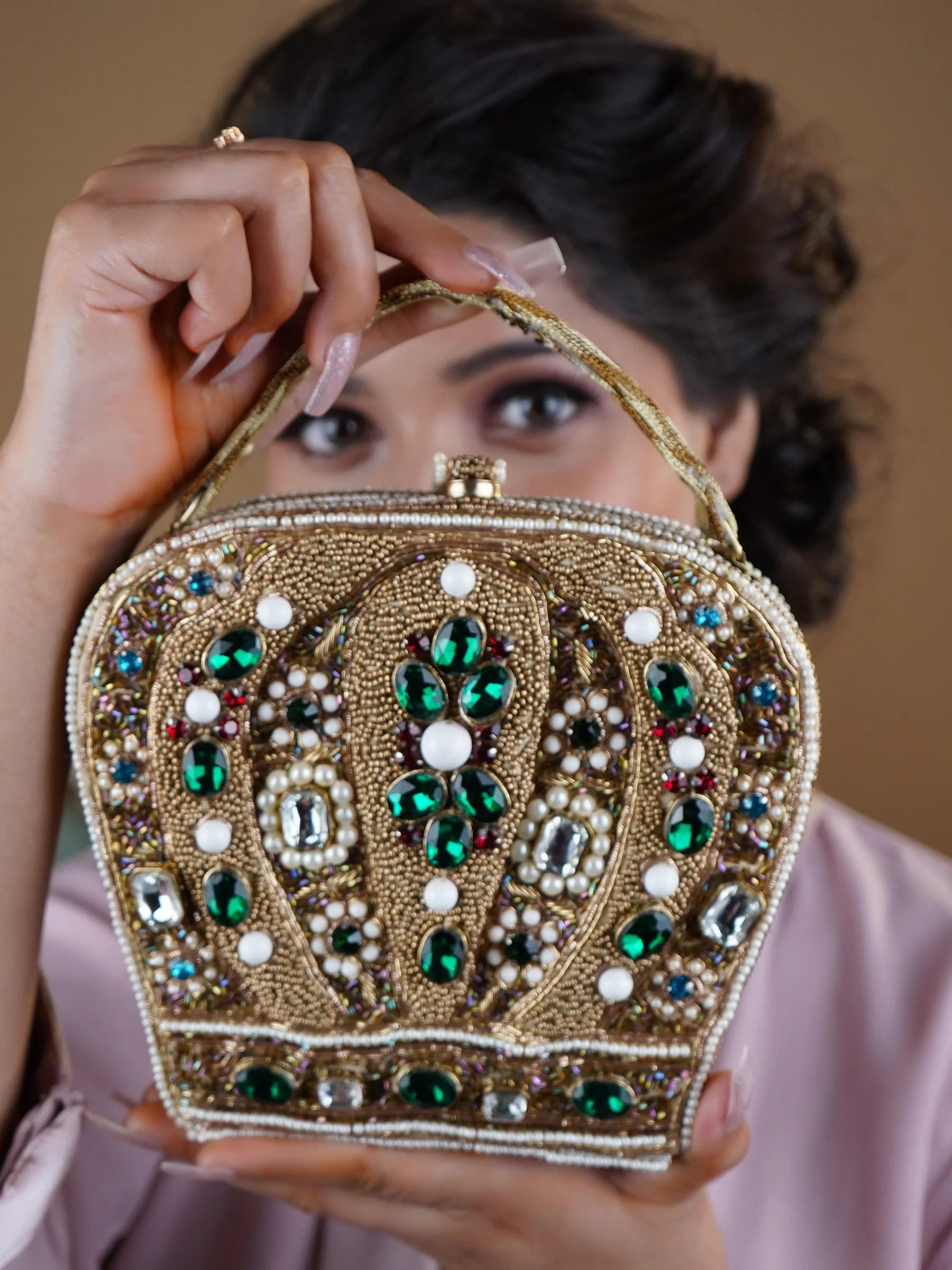The Design of Emotion: How Puneet Gupta Crafted Fine Goods Creates Meaning Through Craft
In today’s world of mass production and fleeting trends, design has often become transactional — focused on aesthetics rather than emotion. But true artistry doesn’t just please the eye; it touches the heart.
At Puneet Gupta Crafted Fine Goods, every creation is a conversation — between craft and culture, between the artisan and the admirer, between the timeless and the contemporary. Here, luxury is not about perfection alone; it’s about presence — the soul within the stitch, the feeling behind the form.
This is the story of how Puneet Gupta transforms emotion into design — and design into legacy.
The Philosophy: Luxury That Feels Human
At its essence, Puneet Gupta Crafted Fine Goods stands for “luxury with emotion.” The brand believes that objects should carry meaning — that every creation, whether a clutch or minaudière, should connect deeply with the person who holds it.
In an age when artificial intelligence and automation dominate production, Puneet Gupta’s atelier remains resolutely human. Every design is drawn by hand, every motif crafted through hours of labor, every detail shaped by feeling.
Emotion as the Starting Point
It could be the serenity of a temple courtyard, the vibrance of an Indian wedding, or the nostalgia of heirloom embroidery passed from mother to daughter. These emotions form the foundation of every design journey.
The Language of Emotion in Design
Emotion in design is not just about how something looks — it’s about how it makes you feel. Puneet Gupta translates emotion through three creative dimensions:
1. Color as Feeling
Colors are never chosen at random in the PG atelier. Each shade carries intention:
-
Gold and ivory represent purity and celebration.
-
Red and maroon signify power, love, and legacy.
-
Pastels express calmness, intimacy, and modern femininity.
-
Metallics and blacks evoke timeless sophistication.
Color becomes the emotional tone of each creation — a language that speaks before the bag even opens.
2. Texture as Memory
The tactile experience of a PG creation is its emotional signature. Rich velvets, luminous silks, intricate beading — each texture tells a story.
The soft grain of the fabric, the glimmer of sequins under evening light, the coolness of the metal clasp — all these sensory details combine to evoke memory and sentiment.
3. Form as Expression
From compact minaudières to sculptural clutches, every PG silhouette is designed to carry both grace and strength. The form reflects the modern woman — poised yet powerful, elegant yet individual.
The balance of structure and softness mirrors the emotional duality of femininity itself — refined, expressive, and enduring.
The Creative Journey: From Thought to Emotion
Step 1: Inspiration — The Emotional Spark
Each PG collection begins with a story — a moment that stirs feeling. For example:
-
The Roshanai Collection draws from the radiance of festive lamps, symbolizing joy and light.
-
Whispers of Versallis reflects quiet romance and Parisian poetry.
-
Vanraaj channels the majestic power of nature and regal grace.
These inspirations are emotional archetypes that anchor the entire design process.
Step 2: Sketching Emotion into Shape
Designers translate emotion into form. A curve might echo the softness of a smile, a beaded border the precision of memory. Puneet Gupta’s sketches are not just blueprints — they’re portraits of feeling.
Step 3: Crafting by Hand — The Human Connection
When artisans begin to embroider, they do more than replicate patterns; they interpret emotion. Their needlework becomes a meditation, each bead and thread layered with intention.
In the atelier, design isn’t dictated by machines but by rhythm — the heartbeat of craftsmanship.
Emotional Resonance: The Secret of Lasting Luxury
What makes a design unforgettable is not its trend appeal — it’s its emotional resonance.
Puneet Gupta’s creations endure because they speak to something universal: the desire to feel connected, seen, and celebrated.
1. Connection to Heritage
Each creation carries fragments of India’s artistic past — centuries-old embroidery, motifs from palaces, echoes of temple architecture. This connection to cultural memory creates a sense of belonging.
2. Connection to the Maker
Luxury often hides its human origins — but PG celebrates them. Every artisan’s touch, every imperfection, every variation makes each bag personal. The owner doesn’t just buy a product — they inherit a piece of someone’s soul.
3. Connection to the Self
When someone carries a Puneet Gupta clutch, it becomes part of their identity — a reflection of their taste, emotion, and story. It’s fashion not for attention, but for expression.
The Emotional Craft of Celebration
Nowhere is emotion more visible than in Puneet Gupta’s wedding and festive creations.
For Brides:
A handcrafted minaudière isn’t just an accessory; it’s a companion through the most emotional day of her life. It holds not just lipstick or jewelry — it holds sentiment, blessings, and memories.
For Families:
Gifting a PG piece is an act of love — a symbol of gratitude, pride, or celebration. These creations become heirlooms that carry family stories forward.
For Collectors:
Owning a PG bag is owning emotion in tangible form — a timeless keepsake that evokes art, heritage, and memory every time it’s seen.
The Power of Storytelling Through Design
Every PG bag is a story disguised as a silhouette. From the way the light catches on the embroidery to the subtle movement of beads, everything is deliberate — storytelling through texture, color, and craftsmanship.
For example:
-
The gold zardozi on a bridal clutch may symbolize divine energy.
-
The floral beadwork could signify renewal and love.
-
The symmetrical motifs might echo architectural harmony and order.
Through these elements, Puneet Gupta doesn’t just design accessories — he designs emotional architecture.
Emotion Meets Modernity: The Global Appeal
The emotional language of Puneet Gupta’s design transcends cultures.
-
In India, it resonates as a revival of traditional artistry.
-
In Europe, it’s admired as fine art in wearable form.
-
In the Middle East, it’s cherished for its regal splendor.
-
In America, it represents conscious luxury — a counterpoint to fast fashion.
By grounding emotion in craftsmanship and design, PG speaks a language that’s understood worldwide: beauty with purpose.
Sustainability as Emotional Responsibility
True emotion in design also carries responsibility. Puneet Gupta’s commitment to sustainability ensures that every creation honors both the artisan and the environment.
-
Ethical sourcing: Every material is chosen thoughtfully, ensuring minimal waste.
-
Small-batch production: Protects quality and avoids overproduction.
-
Artisan livelihood: Each creation sustains traditional communities and future generations of craftsmen.
This responsibility adds another layer of meaning — luxury that not only feels good but does good.
Emotional Legacy: When Design Becomes Memory
A PG creation doesn’t just exist for a moment; it lives across time.
Years later, when a woman opens her closet and sees her Puneet Gupta clutch, she doesn’t just remember the event she wore it to — she remembers how it made her feel.
That feeling — pride, nostalgia, confidence — is what transforms design into emotion, and emotion into legacy.
This is why PG creations are passed down, collected, and cherished. They’re not just fashion; they’re fragments of emotion preserved through artistry.
Conclusion
In a world where design is often driven by speed, Puneet Gupta Crafted Fine Goods invites us to slow down — to feel, to connect, and to appreciate the human heartbeat behind every stitch.
Each creation is a gentle reminder that true luxury isn’t loud — it whispers. It’s not fleeting — it endures. And it’s not superficial — it’s soulful.
Through emotion, craftsmanship, and purpose, Puneet Gupta turns everyday accessories into heirlooms of feeling — pieces that outlast trends and touch hearts.
Because design fades, but emotion lives forever.



